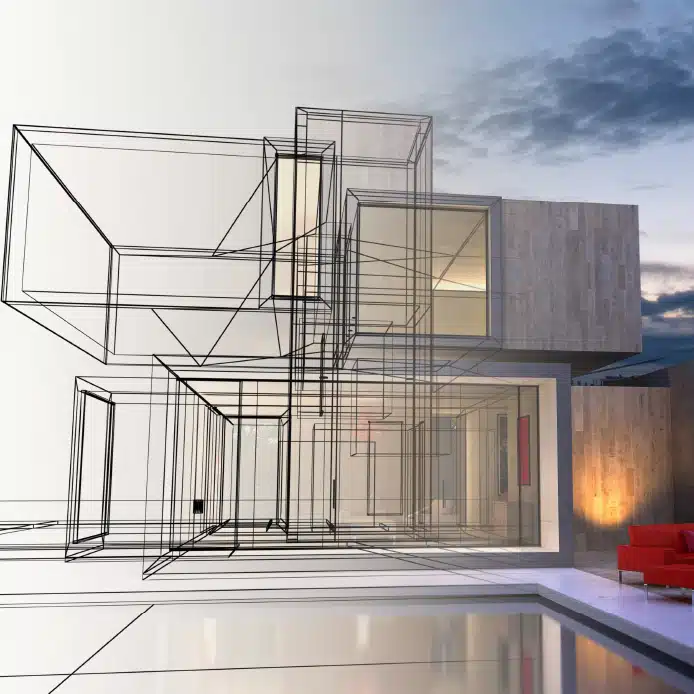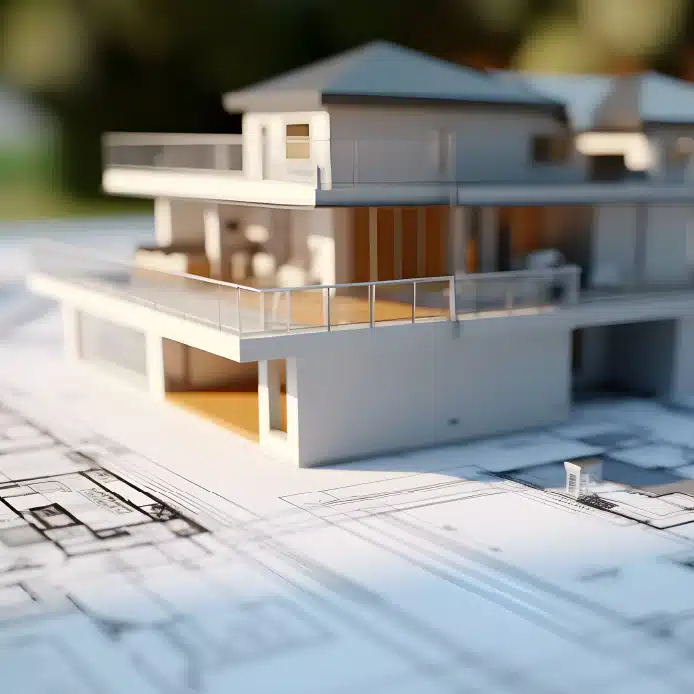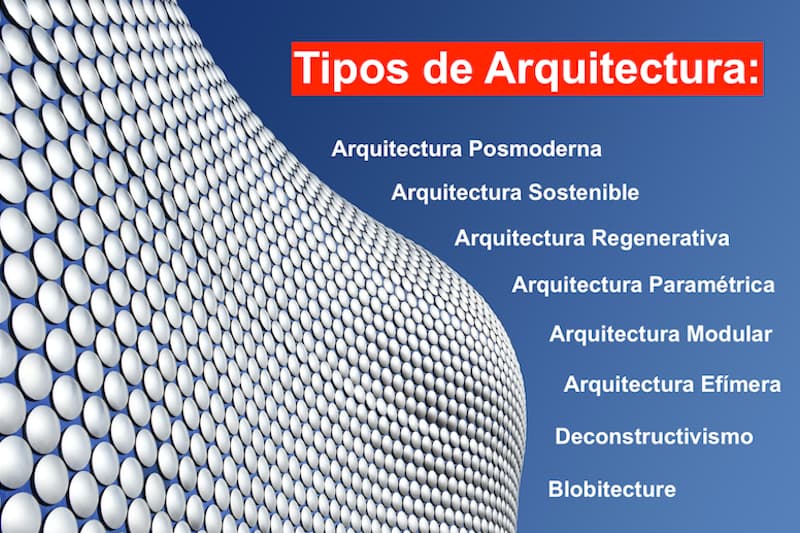- Inicio
- Arquitectura
- _RASCACIELOS
- __Burj Khalifa Dubai
- __Edificio Chrysler, NY
- _Estilos Arquitectónicos
- __Arquitectura Posmoderna
- __Deconstructivismo
- Arte
- _Arte Universal
- _Arte Contemporáneo
- __Serge Marshennikov
- __Damian Lechoszest
- __John Kacere
- _Escultura
- __Venus de Milo
- __Moisés de Miguel Ángel
- __Baldaquino de San Pedro
- __El rapto de Proserpina
- __La Verdad Velada
- __Perseo con cabeza de Medusa
- __Venus de Willendorf
- _Pintura
- __Capilla Sixtina
- __Cuadros Famosos
- __La Creación de Adán
- __Venus del Espejo Velázquez
- __Hipómenes y Atalanta
- __Venus Boticelli
- __Silla de van Gogh
- __Jugadores de Cartas Cézanne
- __Cabeza de Medusa Caravaggio
- __Impresionismo
- __Posimpresionismo
- _Historia
- __Edad Moderna
- Curiosidades
- _Arquitectura y Arte
- _Tumba de Miguel Ángel
- FRASES
- _Frases de la semana
- _Arquitectos
- _Escultores
- __Miguel Ángel Buonarroti
- __Bernini
- __Rodin
- _Pintores
- __Picasso
- __Vincent van Gogh
- __Cézanne
- __Claude Monet
- __Henri Matisse
- __René Magritte
- __Miguel Ángel
- CULTURA
- _Museos
- __Museo del Louvre
- Formación
- _Formación BIM Online
- _Cursos Domestika
- Más
- _ENTREVISTAS
- __Johannes Wesskmark
- __Nathan Zawaya
Lo más visto de la semana!!
RASCACIELOS DESTACADOS EN NY
Rascacielos Postmodernos en EEUU
DESTACADOS AIA 150
- 1.-EMPIRE STATE BUILDING
- 5.-GOLDEN GATE BRIDGE
- 9.-CHRYSLER BUILDING
- 12.-WASHINGTON MONUMENT
- 14.-THE GATEWAY ARCH
- 19.-THE WORLD TRADE CENTER
- 20.-BROOKLYN BRIDGE
- 29.-FALLINGWATER
- 39.-DELANO HOTEL
- 42.-SEARS TOWER
- 44.-WOOLWORTH BUILDING
- 59.-MILWAUKEE ART MUSEUM
- 61.-TRANSAMERICA PYRAMID
- 68.-THE NEW YORK TIMES TOWER
- 71.-HEARST TOWER
- 72.-FLATIRON BUILDING
- 73.-LAKE POINT TOWER
- 125.-CITICORP CENTER
- 129.-WEISMAN ART MUSEUM
- 132.-PENNZOIL PLACE
PUENTES DESTACADOS EN EL MUNDO
FEDERACIÓN MUNDIAL DE GRANDES TORRES
TORRES DESTACADAS EN EL MUNDO
RASCACIELOS DESTACADOS EN CHICAGO
OBRAS DESTACADAS EN EUROPA
OBRAS MAESTRAS DE LA HISTORIA DEL ARTE: ESCULTURA
- Constellation
- El hombre que camina
- El Ángel del Norte
- Chicago Picasso
- Torres de Ciudad Satélite
- La columna sin fin de Brancusi
- Monte Rushmore
- Cristo Redentor Brasil
- El Pensador de Rodin
- La Edad de Bronce (Rodin)
- Estatua de la Libertad
- La musa dormida Brancusi
- Eros y Psique Cánova
- Caballos de Marly
- Éxtasis Beata Ludovica Albertoni
- Fontana de Trevi
- Fuente de los Cuatro Ríos
- Éxtasis de Santa Teresa
- Fuente del Tritón
- David de Miguel Angel
- La Piedad de Miguel Ángel
- David de Donatello
- Laocoonte y sus hijos
- Victoria de Samotracia
- Cariátides
Especial ¿Sabías qué...?
OBRAS DESTACADAS EN ITALIA
Frases Célebres: Arquitectos Famosos
Frases Célebres: Pintores Famosos
Arquitectura, Escultura, Pintura, Ingeniería, Software-Programas de Diseño Arquitectónico: Metodología BIM, Revit, AutoCAD, 3ds max, Animación; Software de Adobe; Cursos online, Libros, Historia, Cultura, Timelapse y Dronelapse sobre Arquitectura y ciudades, Frases Célebres, Curiosidades, Rascacielos, Puentes, Edificios interesantes, Construcciones vanguardistas, Construcciones famosas, Diseño, Arte, Fotografía Arquitectónica / Architecture, Sculpture, Painting, Engineering, Software-Architectural Design Programs: BIM Methodology, Revit, AutoCAD, 3ds max, Animation; Adobe software; Online courses, Books, History, Culture, Timelapse and Dronelapse on Architecture and cities, Famous Phrases, Curiosities, Skyscrapers, Bridges, Interesting buildings, Avant-garde constructions, Famous constructions, Design, Art, Architectural Photography
CURIOSIDADES ARQUITECTURA Y ARTE (PÁG. 2)

DATOS CURIOSOS
Índice de Contenidos:- Transamerica Pyramid San Francisco (Inspirado en la forma de un árbol)
- Burj Khalifa - Burj Dubai (Hymenocallis)
- The Dancing House (La Casa Danzante de Frank Gehry)
- Partenón de Atenas (Escultura Athena)
- Torres Petronas de César Pelli (Cimentación débil)
- 8 Spruce Street (Fachada efecto cortina inspirada en los pliegues de la escultura Éxtasis de Santa Teresa de Bernini)
- La Sagrada Família de Gaudí (Torre de Jesucristo)

Transamerica Pyramid
¿Sabías qué...? Aunque de la sensación que la Pirámide de Transamérica simule la figura humana, el espectacular edificio esta inspirado en la forma de los árboles de un parque público de la ciudad californiana de San Francisco. La visión para construir este increíble rascacielos estuvo a cargo del entonces Presidente de la Transamérica John R. Beckett, quien encargaba al prestigioso arquitecto William Pereira el edificio más alto de la ciudad para que fuese la Sede principal de la importante Corporación. El arquitecto ideó un edificio sobrecogedor gracias a la forma piramidal de su preciosa fachada. Ésta, se erige espléndida sobre una estructura de 16.000 m³ de hormigón reforzada con alrededor de 487 kilómetros de barras de acero.
Did you know...? Although the feeling that the Transamerica Pyramid simulate the human figure, the spectacular building is inspired by the shape of the trees in a public park in the Californian city of San Francisco. The vision for this incredible skyscraper was built by the then President of the Transamerica John R. Beckett, who commissioned the renowned architect William Pereira the tallest building in the city to be the headquarters of the major corporation. The architect designed a building due to overwhelming pyramidal its beautiful facade. This, stands on a structure splendid 16,000 m³ of concrete reinforced with about 487 kilometers of steel bars.

above, detail of sculpture tribute to San Juan Nepomuceno. Despite possessing the beauty so beautifully baroque sculptures adorn the beautiful Charles Bridge today, these are copies, as originals Lapidarium moved to the National Museum to preserve them; below, a nice view Vltava river at the foot of the famous castle in the background of the image; down, lovely image of the Transamerica Pyramid with the famous Golden Gate Bridge in the background. / Una cúspide en forma de pirámide de unos 65 metros de altura con una función puramente estética, corona este interesantísimo rascacielos desde el punto de vista estructural y arquitectónico. Además, debido a que la obra tiene forma piramidal, sólo 2 de los 18 ascensores con los que cuenta el edificio, llegan hasta la planta superior.
Burj Khalifa (Burj Dubai)
¿Sabías qué...? El diseño del Burj Khalifa, llamado en un principio Burj Dubai (Torre de Dubai) —y que actualmente es con sus 828 metros de altura el rascacielos más alto del mundo—, está inspirado en la hymenocallis, una flor originaria del desierto de Dubai. Gracias a la forma de esta flor, surgió la genial idea de construir una super-estructura modular con un núcleo central y tres alas en espiral con retrocesos; de esta forma, recortando los módulos de la torre a diferentes alturas, se consiguió reducir la carga transversal por la acción horizontal del viento pudiendo ganar así mucho más altura.
Did you know...? The design of Burj Khalifa, originally named Burj Dubai (Dubai Tower), —is now its 828 meters high the tallest skyscraper in the world—, is inspired by the Hymenocallis, a flower native to the desert of Dubai. Thanks to the form of this flower, came the great idea of building a super-modular structure with a central core and three wings spiral with setbacks, thus cutting the tower blocks at different heights, are able to reduce the burden transverse horizontal wind action can win so much height.


The Dancing House
¿Sabías qué...? La conocida pareja de baile formada por los artistas Fred Astaire y Ginger Rogers, inspiró al prestigioso arquitecto Frank O. Gehry para diseñar un edificio sobrecogedor que se encuentra localizado a orillas del Río Moldava en la preciosa ciudad europea de Praga. El nombre oficial del edificio es "Nationale-Nederlanden Building" en honor a su Promotor, la Compañía del Grupo Internacional ING. Al famoso edificio se le conoce mundialmente también con el sobrenombre de "The Dancing House", o "La Casa Danzante", en homenaje a esta famosa pareja de baile. Esta pareja de artistas queda representada en las dos torres del bellísimo edificio que forman una esquina, y que realmente parecen evocar a la famosa pareja de baile desde cualquier punto de vista desde el que se mire a lo largo del río. El majestuoso edificio se erige espléndido muy próximo al Teatro Nacional; también muy cerca del famoso Puente de Carlos IV y de otros centros culturales importantes.

Did you know...? The famous dancing couple formed by artists Fred Astaire and Ginger Rogers, inspired by renowned architect Frank O. Gehry to design a breathtaking building that is located on the banks of the Vltava River in the beautiful European city of Prague. The official name of the building is "Nationale-Nederlanden Building" in honor of its sponsor, the International Group Company ING. The famous building is also known world by the nickname of "The Dancing House" in honor of this famous dance partner. This pair of artists is represented in the two towers of the beautiful building that form a corner, and they really seem to evoke the famous dance partner from any point of view from which you look along the river. The majestic splendid building was erected very close to the National Theatre, also near the famous Charles IV Bridge and other important cultural centers.


Parthenon of Athens
¿Sabías qué...? El nombre del famoso Partenón de Atenas se debe a que el templo se construyó en honor a la Diosa Atenea Partenos, de ahí su nombre. Fidias, el más famoso escultor de la época creó una enorme escultura de 12 metros de altura que representaba a esta diosa y que situó en el interior del edificio para protegerlo. La escultura fue tallada en madera y recubierta de marfil; posteriormente, el gran escultor y arquitecto Fidias la decoró con 1200 kg. de oro. Una escultura idéntica se puede admirar en la actualidad en el interior de la réplica del Partenón de Nashville en Tennessee, Estados Unidos.
Did you know...? The name of the famous Parthenon in Athens is that the temple was built in honor of the Goddess Athena Parthenos, hence its name. Phidias, the most famous sculptor of the time created a huge sculpture of 12 feet high representing the goddess and placed inside the building to protect it. The sculpture was carved in wood and covered with ivory; later, the great sculptor and architect Phidias decorated it with 1200 kg. gold. An identical sculpture can admire now inside the replica of the Parthenon in Nashville, Tennessee, United States.



Petronas Twin Towers
¿Sabías qué...? Después de elaborar el proyecto de las Torres Petronas de Kuala Lumpur, en Malasia, se realizó un estudio geológico del subsuelo y los técnicos se dieron cuenta de que el emplazamiento donde se iban a construir las torres coincidía no sólo con el borde de un precipicio, sino que además, se encontrarían sobre un terreno de piedra caliza descompuesta algo débil que no iba a soportar el enorme peso de las dos torres. Por este motivo, se decidió cambiar el emplazamiento 60 metros hasta una base más sólida.
Una serie de pilotes que llegaron en algunos casos hasta los 80 metros de profundidad, se anclaron en roca firme y le dieron la estabilidad que necesitaba la cimentación para poder llevar a cabo una obra de tales magnitudes. No obstante, dos grupos de trabajadores de distintas nacionalidades compitieron frenéticamente durante varios años para ver quien podía construir primero cada torre hasta la cima.
Además, con la construcción de las bellas torres en 1998 diseño de César Pelli se consiguió no sólo el récord del mundo en altura de rascacielos superando a la Torre Sears de Chicago en 10 metros, sino que además, se convirtieron en las estructuras de hormigón más altas del mundo.
Did you know...? After preparing the draft of the Petronas Towers in Kuala Lumpur in Malaysia, we conducted a geological survey of subsoil and technicians realized that the site where the towers were going to build not only coincided with the edge of a precipice, but also be found on a land of broken limestone something weak that would not carry the heavy load of the two towers. For this reason, we decided to change the site 60 meters to a more solid basis.
A number of piles in some cases reached up to 80 meters deep, were anchored in bedrock and gave him the stability he needed foundation to carry out a work of such magnitude. However, two groups of workers of different nationalities competed furiously for several years to see who could first build each tower to the top.
In addition, with the construction of the beautiful towers in 1998 design by Cesar Pelli, not only was the world record at the height of skyscrapers surpassing the Sears Tower in Chicago by 10 meters, but they also became the most concrete structures high in the world
New York by Gehry
¿Sabías qué...? Para la forma ondulante de la fachada del 8 Spruce Street (Número 8 de la Calle Spruce) de Nueva York, también conocido como New York by Gehry, el arquitecto Frank Gehry se inspiró en los pliegues de la caída de los vestidos de la escultura Éxtasis de Santa Teresa que se encuentra en la Iglesia Romana de Santa Maria della Vittoria, obra del famoso escultor Gian Lorenzo Bernini. El nuevo rascacielos de Gehry, que se sitúa muy cerca del Woolworth Building —el más alto del mundo desde 1913 hasta 1930—, crea un efecto cortina sorprendente y llamativo que no pasa desapercibido para nadie que visite esta ciudad, gracias a los módulos prefabricados de acero inoxidable que componen la fachada vanguardista y de preciosas coloraciones.
Did you know...? For the undulating shape of the facade of Eight Spruce Street (No. 8 Spruce Street) New York, also known as New York by Gehry, the architect Frank Gehry was inspired by the falling folds of the dresses of sculpture Ecstasy Santa Teresa is located in the Roman Church of Santa Maria della Vittoria, the work of famous sculptor Gian Lorenzo Bernini. Gehry's new skyscraper, which is situated very close to the Woolworth Building, —the tallest in the world from 1913 to 1930— creates an amazing and eye-catching screen effect that is not lost on anyone who visits the city, thanks to the prefabricated modules stainless steel up the front cutting edge and beautiful colors.

above, as seen from Brooklyn's new skyscraper designed by Frank O. Gehry which shows the striking effect curtain down, beautiful image of the sculpture Ecstasy of St. Teresa of sculptor Gian Lorenzo Bernini in which Frank Gehry was inspired to shape the facade of its new hybrid building. / arriba, vista desde Brooklyn del nuevo rascacielos diseño de Frank O. Gehry en el que se aprecia el sorprendente efecto cortina; abajo, bellísima imagen de la escultura Éxtasis de Santa Teresa del escultor Gian Lorenzo Bernini en la que se inspiró Frank Gehry para darle forma a la fachada de su nuevo edificio híbrido.

La Sagrada Familia
¿Sabías qué...? La construcción de la torre central de La Sagrada Família (la Torre de Jesucristo) , arrancará en 2013 y modificará el skyline de la ciudad con sus 170 metros de altura en su punto más alto. La cúspide, a la que se podrá subir mediante un ascensor o escaleras que bordearán éste, se convertirá en una gran atracción turística para la ciudad, desde la que se podrán contemplar maravillosas vistas de Barcelona; Gaudí ya decía: « llegando a Barcelona el Templo emergirá soberbio con la cruz a 170 metros ».
Did you know...? The construction of the central tower of La Sagrada Familia (the Tower of Christ), will start in 2013 and amended the city skyline with its 170 meters high at its highest point. The summit, which will be up by lift or stairs that will border it will become a major tourist attraction for the city, from which you can admire wonderful views of Barcelona, Gaudí said: « Barcelona reaching the Temple will superb cross with the 170 meters ».

above, plan and section of the Sagrada Familia in Barcelona by Antoni Gaudí, where you can see the outline of vertical communication lifts in different colors, in yellow include access to the top of the Tower of Christ to reach 170 meters, the Torre Agbar by Jean Nouvel has 144 m. / arriba, planta y sección del Templo de La Sagrada Família de Barcelona obra de Antoni Gaudí, donde se puede ver el esquema de ascensores de comunicación vertical en diferentes colores; en color amarillo figura el acceso a la cima de la Torre de Jesucristo que alcanzará 170 metros; la Torre Agbar de Jean Nouvel dispone de 144 m.
Págs. 1-2-3-4-5-6-7-8-9-10-11-
12-13-14-15-16-17-18-19
Related content / Contenido relacionado
¡Hola y bienvenido/a!
Gracias por visitar mi blog sobre Arquitectura y Arte: www.jmhdezhdez.com. Aquí comparto mi pasión por el diseño, la creatividad y las últimas tendencias en el mundo de la arquitectura. Si deseas seguir mi trabajo y proyectos, te invito a explorar la continuación natural de este blog en mi nuevo sitio web: ArquitecturaCarreras.com. En este nuevo espacio encontrarás artículos, recursos y novedades que estoy seguro te inspirarán. ¡Te espero allí con muchas novedades!
Gracias por visitar mi blog sobre Arquitectura y Arte: www.jmhdezhdez.com. Aquí comparto mi pasión por el diseño, la creatividad y las últimas tendencias en el mundo de la arquitectura. Si deseas seguir mi trabajo y proyectos, te invito a explorar la continuación natural de este blog en mi nuevo sitio web: ArquitecturaCarreras.com. En este nuevo espacio encontrarás artículos, recursos y novedades que estoy seguro te inspirarán. ¡Te espero allí con muchas novedades!


Arquitectura y Tecnología al servicio del diseño inteligente.
Esta guía esencial para Smart Homes te muestra cómo integrar dispositivos inteligentes en viviendas contemporáneas, mejorando el confort, la eficiencia energética y el diseño funcional. Ideal para arquitectos, interioristas y entusiastas del arte del habitar.
👉 Descubre la guía completa
Fotografía de Arquitectura

Directorio de Fotógrafos de Arquitectura en España: Descubre a los Mejores Expertos en Fotografía Arquitectónica para Documentar tus Proyectos y Obras

Fotografía Arquitectónica: La Guía Definitiva para Capturar Diseño, Estética y Función de Edificios y Estructuras

Fotografía y Vídeo Timelapse

El Rol del Fotógrafo de Arquitectura

Cámaras Réflex y Objetivos Tilt-Shift para Fotografía de Arquitectura
FORMACIÓN BIM MÁS DEMANDADA
Alta tasa de empleabilidad: 8 de cada 10 alumnos de RF AECO con quienes colaboramos logra encontrar empleo antes de finalizar su Curso o Máster. Obtén más información → aquí o descubre la renovada Bolsa de Empleo para alumnos y antiguos alumnos (ALUMNI). A continuación te mostramos los 4 cursos que más demandan los profesionales en la actualidad 2024-2025:

➔ Curso Modelador BIM, especialista Revit – BIM Specialist
Curso de modelador BIM y especialista en Revit, formación avanzada en BIM para profesionales de la construcción. ¡Plazas limitadas! ¡No te quedes fuera!

➔ Curso Online Revit Architecture: Essentials v. 2024
Curso online de Revit Architecture Essentials v. 2024, introducción al software Revit para arquitectura.

➔ Curso AutoCAD Plant 3D: Modelamiento v. 24
Curso de AutoCAD Plant 3D versión 24, modelamiento avanzado para proyectos de plantas industriales.

➔ Diseño y Cálculo de Estructuras con CYPE
Curso de diseño y cálculo de estructuras con CYPE, formación en software de ingeniería estructural.
Muy importante! Si tienes dudas o no tienes claro cuál es el curso o máster que más se adapta a tu perfil profesional, escríbeme un e-mail a info@jmhdezhdez.com y estaré encantado de orientarte.

➔ Curso Modelador BIM, especialista Revit – BIM Specialist
Curso de modelador BIM y especialista en Revit, formación avanzada en BIM para profesionales de la construcción. ¡Plazas limitadas! ¡No te quedes fuera!

➔ Curso Online Revit Architecture: Essentials v. 2024
Curso online de Revit Architecture Essentials v. 2024, introducción al software Revit para arquitectura.

➔ Curso AutoCAD Plant 3D: Modelamiento v. 24
Curso de AutoCAD Plant 3D versión 24, modelamiento avanzado para proyectos de plantas industriales.

➔ Diseño y Cálculo de Estructuras con CYPE
Curso de diseño y cálculo de estructuras con CYPE, formación en software de ingeniería estructural.
Muy importante! Si tienes dudas o no tienes claro cuál es el curso o máster que más se adapta a tu perfil profesional, escríbeme un e-mail a info@jmhdezhdez.com y estaré encantado de orientarte.
DESTACADOS EN ARQUITECTURACARRERAS.COM

Estilos Arquitectónicos Modernos: Un Viaje a Través de la Creatividad y la Innovación

ARQUITECTURA CARRERA: Descubre todas las Opciones de la Carrera en Arquitectura y Grados en España

Comparativa de las Mejores Universidades de Arquitectura del Mundo: Internacional, Europa, LATAM

Los Mejores Libros de Arquitectura para Arquitectos

Libros para Estudiar Arquitectura

Libros para Arquitectos Principiantes: Guías y Recursos Esenciales para Comenzar tu Carrera

Los Mejores Libros de Arquitectura para Estudiantes durante la Carrera

Era Digital de la Construcción: Innovaciones Tecnológicas en Arquitectura y Edificación

Comparativa de Los Mejores Ordenadores para Arquitectos en 2024

Las Mejores Laptops para Arquitectura en 2024

Los Mejores Ordenadores de Arquitectura para Estudiantes

Significado de: Términos Clave sobre Arquitectura, Ingeniería y Construcción

Arquitectos: Descubre el Mejor Directorio de Arquitectos que podrás encontrar en Internet (Sólo en AC)

Tipos de Arquitectura: Explorando Más Allá de los Diseños Convencionales

FRASES DE ARQUITECTOS

Roles Arquitectura y Construcción (Profesiones Arquitectura)

Certificaciones para Arquitectos: Avanzando en la Excelencia Profesional

Roles BIM más Demandados en la Industria de la Construcción y el Sector AECO

Software BIM para Proyectos de Arquitectura y Construcción

Tecnología BIM: Beneficios y Ventajas en el sector AECO: Arquitectura, Ingeniería, Construcción y Operaciones

Modelo BIM

Modelo MEP

BIM 3D 4D 5D 6D 7D

AECO: Sector Arquitectura, Ingeniería, Construcción y Operaciones

Avances Tecnológicos en la Industria de la Construcción

Normas Técnicas de Edificación

!Explora el Mejor Directorio de Construcción! 🚧 🏗️ 👷♂️ (Sólo en ArquitecturaCarreras.com)
Categorías destacadas en el blog!!
▷ LA REVOLUCIÓN DEL BIM.. CURSOS BIM RECOMENDADOS!! RENDERS' FACTORY AECO..

CURSOS BIM ONLINE

▷ Formación BIM
▷ Master en BIM Online
▷ Máster BIM Internacional Oficial Autodesk
▷ Master BIM Manager Online
▷ BIM Expert
▷ BIM Specialist
▷ Curso Revit Arquitectura
▷ Curso familias Revit
▷ De Revit a 3ds Max: Renderizado con V-ray
▷ Curso Revit Estructuras
▷ Curso Revit MEP

Conoce todos los aspectos de la Metodología BIM y Revit
TODOS LOS CURSOS Y MÁSTERES BIM
→ MÁSTERS
→ BIM
→ AUTODESK
→ CYPE
→ DISEÑO MECÁNICO
▷ CURSOS ONLINE RECOMENDADOS!!

- CATEGORÍAS DE CURSOS ONLINE
▷ Formación online
▷ Cursos online
▷ Domestika Cursos
▷ Domestika cupón descuento
▷ Cursos de Arquitectura online
▷ Cursos online de Ilustración
▷ Cursos online de Diseño gráfico
▷ Cursos online de Fotografía y Vídeo
▷ Cursos online de 3D y Animación
▷ Cursos de Diseño online
▷ Cursos online de Dibujo
▷ Cursos online de Bellas Artes
▷ Cursos online de Dirección de Arte
- CURSOS ONLINE DOMESTIKA (POR SOFTWARE)
▷ AutoCAD
▷ SketchUp
▷ 3ds Max
▷ Adobe Photoshop
▷ Adobe Illustrator
▷ Adobe After Effects
▷ Adobe Lightroom
▷ Cinema 4D
▷ Adobe Indesign
LOS MEJORES CURSOS ONLINE PARA CREATIVOS | CURSOS DOMESTIKA
- ÚLTIMAS RESEÑAS CURSOS DOMESTIKA
 ▷ Curso Revit Online, por Majo Mora
▷ Curso Revit Online, por Majo Mora
 ▷ Curso de AutoCAD Online, por Isabel Martínez Abascal
▷ Curso de AutoCAD Online, por Isabel Martínez Abascal
 ▷ Curso SketchUp online, por Alejandro Soriano
▷ Curso SketchUp online, por Alejandro Soriano
 ▷ Curso Infoarquitectura 3D, por Amo Visual 3D
▷ Curso Infoarquitectura 3D, por Amo Visual 3D
 ▷ Curso de Lumion, por Salva Moret
▷ Curso de Lumion, por Salva Moret
MARAVILLAS DEL MUNDO
- CRISTO REDENTOR, BRASIL
- CHICHEN ITZÁ, MEXICO
- COLISEO DE ROMA, ITALIA
- CIUDAD DE PETRA, JORDANIA
- PIRÁMIDES DE GIZA, EGIPTO
- ÓPERA DE SÍDNEY, AUSTRALIA
- EIFFEL TOWER, FRANCIA
- STATUE OF LIBERTY, EE.UU.
- MOÁIS DE LA ISLA DE PASCUA, CHILE
- ACRÓPOLIS DE ATENAS, GRECIA
- TORRE DE PISA, ITALIA
- GOLDEN GATE BRIDGE, EE.UU.
- EMPIRE STATE BUILDING, EE.UU.
- BIG BEN, INGLATERRA
- TORRES PETRONAS, MALASIA
- PUENTE DE CARLOS IV, REPÚBLICA CHECA
- MONTE RUSHMORE, ESTADOS UNIDOS
- MUSEO GUGGENHEIM BILBAO, ESPAÑA
- HOTEL BURJ AL ARAB, UAE
- CAPILLA SIXTINA, ITALIA
- CN TOWER DE TORONTO, CANADÁ
Edificios altos destacados en USA
- ONE WORLD TRADE CENTER, NEW YORK
- 8 SPRUCE STREET, NEW YORK
- AQUA TOWER, CHICAGO
- TRUMP CHICAGO TOWER, CHICAGO
- BANK OF AMERICA TOWER, NEW YORK
- THE CHICAGO SPIRE, (OBRA PARALIZADA)
- THE NEW YORK TIMES TOWER, NEW YORK
- HEARST TOWER, NEW YORK
- ESPIRITO SANTO PLAZA, MIAMI
- MIAMI TOWER, MIAMI
- FOUNTAIN PLACE, DALLAS
- CITICORP CENTER, NEW YORK
- PENNZOIL PLACE, HOUSTON
- SEARS TOWER, CHICAGO
- OLD WORLD TRADE CENTER, NEW YORK
- TRANSAMERICA PYRAMID, SAN FRANCISCO
- JOHN HANCOCK CENTER, CHICAGO
- LAKE POINT TOWER, CHICAGO
- MARINA CITY, CHICAGO
- SEAGRAM BUILDING, NEW YORK
- MILE HIGH TOWER | THE ILLINOIS, (VISIÓN)
- AMERICAN INTERNATIONAL, NEW YORK
- EMPIRE STATE BUILDING, NEW YORK
- 570 LEXINGTON AVENUE, NEW YORK
- CHRYSLER BUILDING, NEW YORK
- WOOLWORTH BUILDING, NEW YORK
- FLATIRON BUILDING, NEW YORK
- HOME INSURANCE BUILDING, CHICAGO
Entradas especiales
MONUMENTOS DESTACADOS EN EL MUNDO
- HSB TURNING TORSO
- CN TOWER, CANADÁ
- ARCO DE ST. LOUIS, MISSOURI
- SPACE NEEDLE, SEATTLE
- TORRES DE CIUDAD SATÉLITE, MÉXICO
- MEMORIAL MONTE RUSHMORE, DAKOTA DEL SUR
- COLUMNA SIN FIN, RUMANÍA
- GOLDEN GATE BRIDGE, SAN FRANCISCO
- EMPIRE STATE BUILDING, NUEVA YORK
- CHRYSLER BUILDING, NUEVA YORK
- CRISTO REDENTOR, RIO DE JANEIRO
- LA PEDRERA, BARCELONA
- EL PENSADOR DE RODIN, PARÍS
- EDIFICIO FLATIRON, NUEVA YORK
- TOWER BRIDGE (PUENTE TORRE), LONDRES
- TORRE EIFFEL, PARÍS
- ESTATUA DE LA LIBERTAD, NUEVA YORK
- HOME INSURANCE BUILDING, CHICAGO
- BROOKLYN BRIDGE, NUEVA YORK
- WASHINGTON MONUMENT, WASHINGTON D.C.
- STATUE OF FREEDOM CAPITOLIO, WA DC
- BIG BEN, LONDRES
- PUERTA DE BRANDENBURGO, BERLÍN
- FONTANA DI TREVI, ROMA
- FUENTE DE LOS CUATRO RÍOS, ROMA
- ÉXTASIS DE SANTA TERESA, ROMA
- FUENTE DEL TRITÓN, ROMA
- PUENTE DE RIALTO, VENECIA
- TUMBA DE MICHELANGELO, FLORENCIA
- CAPILLA SIXTINA, ROMA
- DAVID DE MIGUEL ÁNGEL, FLORENCIA
- PUENTE DE CARLOS, PRAGA
- PONTE VECCHIO, FLORENCIA
- TORRE DE PISA, LA TOSCANA
- MOÁIS DE LA ISLA DE PASCUA, CHILE
- CHICHEN ITZÁ, YUCATÁN
- LAOCOONTE Y SUS HIJOS, ROMA
- COLISEO DE ROMA, ITALIA
- VICTORIA DE SAMOTRACIA, MUSEO DEL LOUVRE
- VENUS DE MILO
- CARIÁTIDES DE ATENAS
- ACRÓPOLIS DE ATENAS, GRECIA
- PETRA, JORNANIA
- EL ESCRIBA SENTADO DEL LOUVRE
- PIRAMIDES DE GIZA, EGIPTO
¿Sabías qué...? muy interesantes! Curiosidades: Arquitectura, Escultura, Pintura y Arte
PUENTES VANGUARDISTAS DESTACADOS
- Infinity Bridge, Stockton
- Juscelino Kubitschek Bridge, Brasilia
- Millenium Bridge, London
- Golden Gate Bridge, San Francisco
- Brooklyn Bridge, New York City
- Megyeri Bridge, Budapest
- Millau Viaduct, Aveyron
- Harilaos Trikoupis Bridge, Athens
- Seri Wawasan Bridge, Putrajaya
- Reiman Bridge, Milwaukee
- UFO Bridge, Bratislava
- Puente del Alamillo, Sevilla
- Sundial Bridge, Redding
- Reggio Emilia Bridges, Bolonia
- Puente del Tercer Milenio, Zaragoza
- Campo Volantin Footbridge, Bilbao
- Puente de la Barqueta, Sevilla
- Humber River Bridge, Toronto
- Puente Bach de Roda, Barcelona
- BP Bridge, Chicago
- Pasarela de la Arganzuela, Madrid
- Erasmus Bridge, Rotterdam
- Puente de la Mujer, Buenos Aires
- Gateshead Millenium Bridge, London
CUADROS FAMOSOS (PINTURA)
- El Guernica (Picasso)
- La Danza (Henri Matisse)
- El beso (Gustav Klimt)
- El grito (Edvard Munch)
- La Noche estrellada (Vincent van Gogh)
- Un baño en Asnières (Georges Seurat)
- Impresionismo (Pintores destacados)
- La Libertad guiando al pueblo (Delacroix)
- Saturno devorando a un hijo (Goya)
- La Joven de la Perla (Vermeer)
- La Venus del espejo (Diego Velázquez)
- La lechera (Vermeer de Delft)
- La ronda de noche (Rembrandt)
- Hipómenes y Atalanta (Guido Reni)
- La Vocación de San Mateo Caravaggio
- Cabeza de Medusa (Caravaggio)
- Frescos de la Capilla Sixtina (Miguel Ángel)
- Almuerzo sobre la hierba de Manet
REFERENCIAS PARA ARQUITECTOS Y ESTUDIANTES DE ARQUITECTURA Y DISEÑO
Arte Contemporáneo
- Johannes Wessmark (Hiperrealismo)
- Jaume Plensa
- Nathan Sawaya (Arte LEGO)
- Serge Marshennikov (Hiperrealismo)
- Escultura Calatrava Chicago
- Bou (Santiago Calatrava)
- Alberto Giacometti
- Frases Pablo Picasso
- El Ángel del Norte (Antony Gormley)
- El hombre que camina I (Alberto Giacometti)
- Chicago Picasso
- Torres Satélite (Luis Barragán)
- John Kacere (Fotorrealismo)
- El Guernica de Picasso
- La musa dormida (Brancusi)
- El Arte de: Damian Lechoszest
- Frescos de la Capilla Sixtina (Miguel Ángel)
- Almuerzo sobre la hierba de Manet
Mitología, Historia, Leyendas
- Lady Godiva
- Eros y Psique
- Hipómenes y Atalanta (Guido Reni)
- La Creación de Adán de Miguel Ángel
- La Piedad de Miguel Ángel
- Arquitectura Postmoderna
- Frases Gaudí
- Los Rascacielos más altos del Mundo
- Todos los ¿Sabías qué...?
- Deconstructivismo
- Burj Khalifa
- Obras destacadas en: El Museo del Louvre
- Famous phrases
- Pensador de Rodin
- Frases Oscar Niemeyer
www.jmhdezhdez.com
(Blog sobre Arquitectura y Arte)
Copyright ©
José Miguel Hernández Hernández. All rights reserved































































